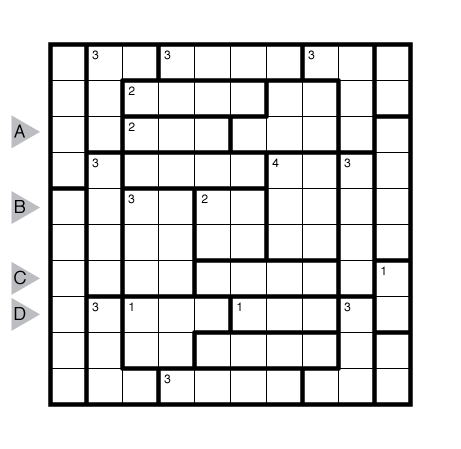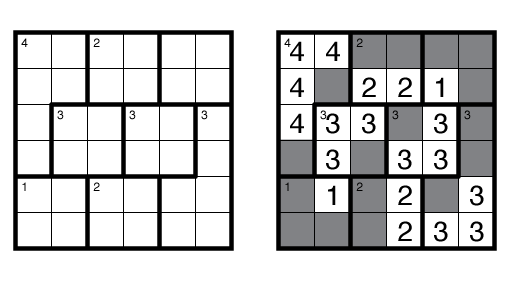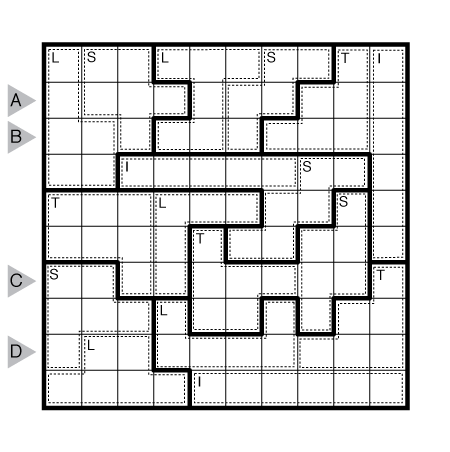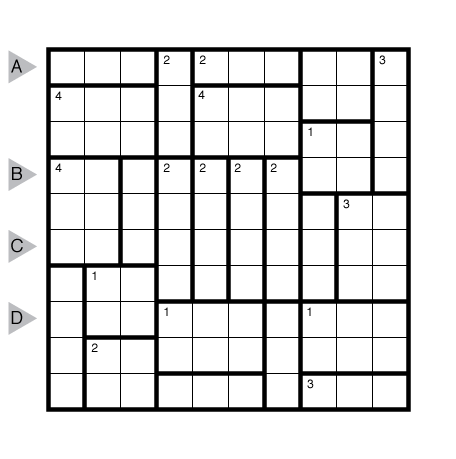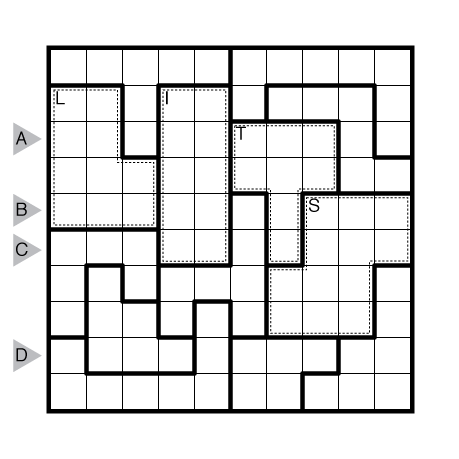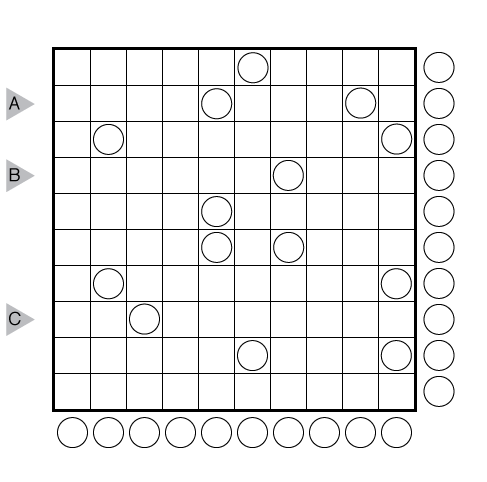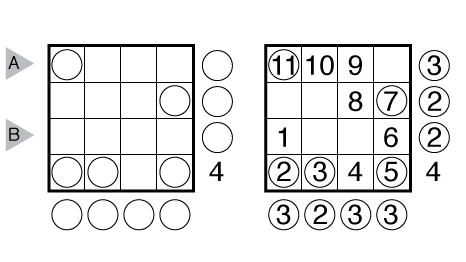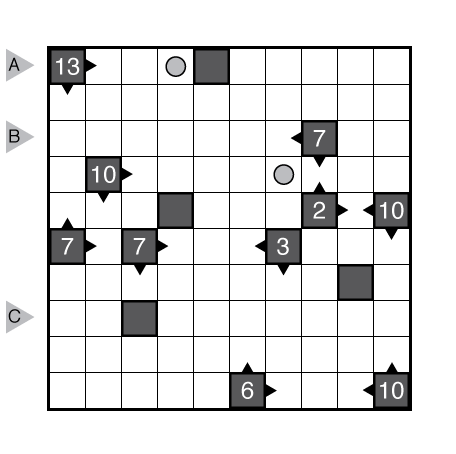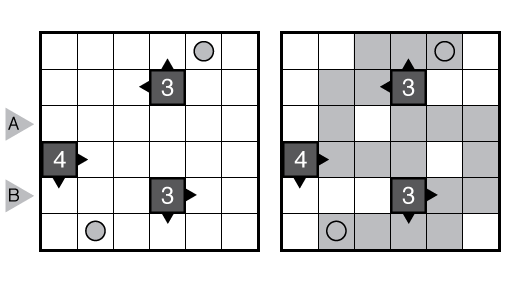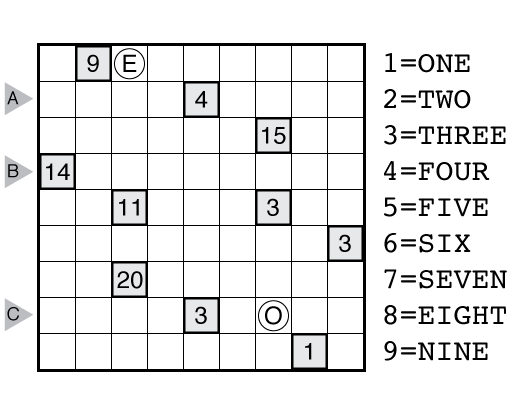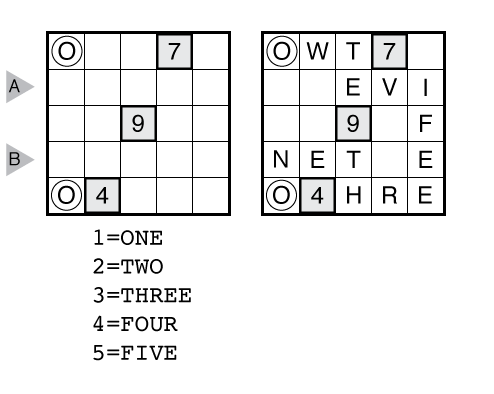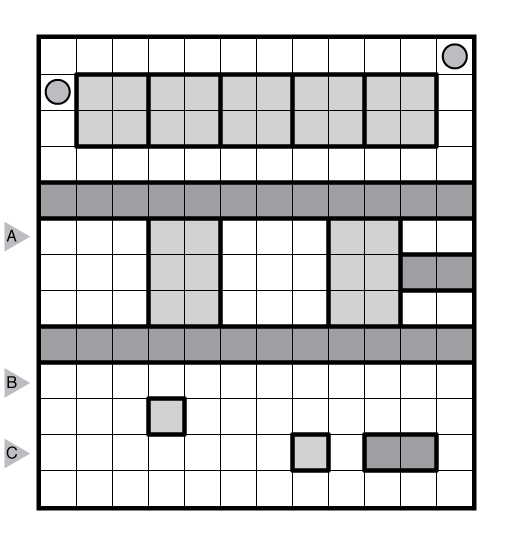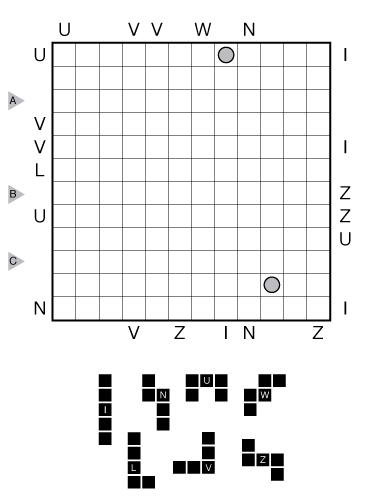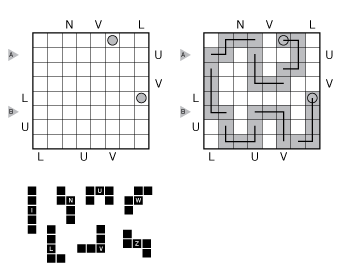LITS (Signpost) by Chris Green
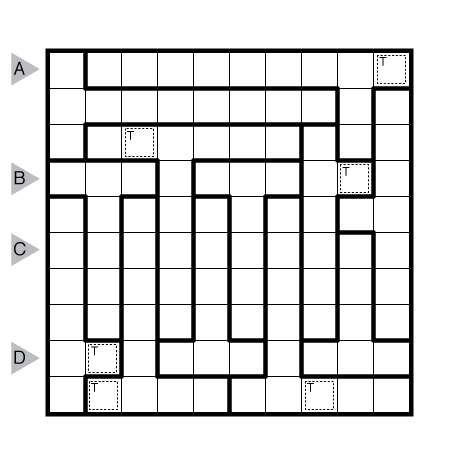
or solve online (using our beta test of Penpa-Edit tools)
Theme: T Junctions
Author/Opus: This is the 3rd puzzle from guest contributor Chris Green.
Rules: Variation of LITS. Some cells or groups of cells are outlined and labeled with a letter. If any of these cells is shaded, then the tetromino shape must match the clued letter.
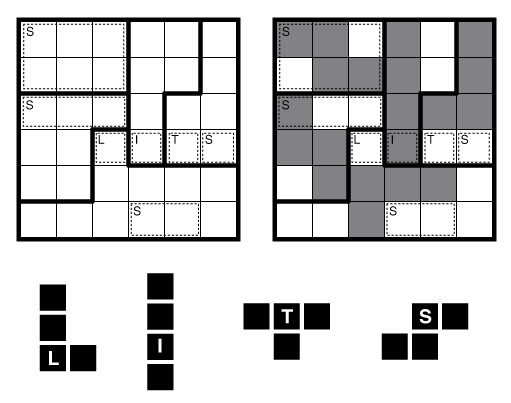
Answer String: Enter the length in cells of each of the shaded segments from left to right for the marked rows, starting at the top. Separate each row’s entry from the next with a comma.
Time Standards (highlight to view): Grandmaster = 8:15, Master = 14:00, Expert = 28:00
Solution: PDF
Note: Follow this link for more variations of LITS and this link for classic LITS. If you are new to this puzzle type, here are our easiest LITS to get started on.

